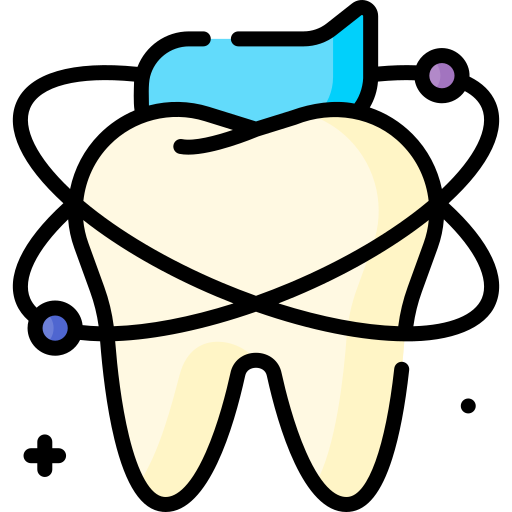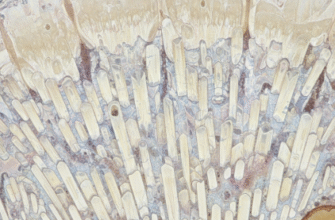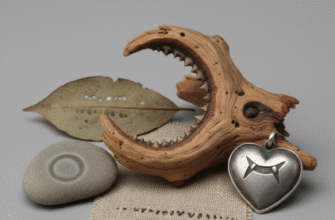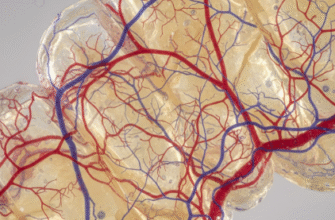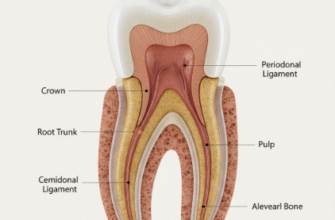Ever run your tongue over your teeth and felt that slightly fuzzy, sometimes even gritty, film? That, in essence, is the beginning of a complex, microscopic world known as dental plaque. It’s far more than just food debris; it’s a living, breathing, and constantly evolving community of microorganisms, a true biofilm. This sticky, usually colorless to pale yellow deposit relentlessly forms on our teeth, as well as on fillings, crowns, and even dentures. Understanding its intricate nature reveals why it plays such a central role in oral ecology.
The Biofilm Blueprint: More Than Just a Pile of Germs
The term biofilm is key here. Think of it not as a random jumble of bacteria, but as an organized, cooperative city. These microbial communities are encased in a self-produced slimy, glue-like substance called the Extracellular Polymeric Substance (EPS) matrix. This matrix is the bacteria’s own creation, a protective and structural scaffold. Living within this matrix offers bacteria significant advantages they wouldn’t have if they were free-floating, or ‘planktonic’. They gain protection from external threats, including antimicrobial agents and the host’s own immune system. This structured existence allows them to thrive in environments that would otherwise be hostile.
Dental plaque is a classic example of a biofilm. Its formation is a dynamic and sequential process, involving different types of bacteria joining the community at different stages. This isn’t a haphazard colonization; it’s a surprisingly orchestrated series of events driven by bacterial interactions and environmental cues.
Step-by-Step: The Construction of a Microbial Metropolis
The journey from a clean tooth surface to a mature plaque biofilm is a fascinating developmental process, unfolding in several distinct phases:
-
The Foundation: Pellicle Formation
Almost immediately after a tooth surface is cleaned, a thin, invisible layer called the acquired enamel pellicle begins to form. This acellular (non-bacterial) film is composed of glycoproteins, proteins, and lipids derived from saliva and crevicular fluid. It’s like laying down the foundation for a new building. The pellicle modifies the tooth surface, providing a conditioning film that influences which bacteria can initially attach. -
Pioneers Arrive: Initial Reversible Attachment
Within hours, the first wave of bacteria, known as pioneer colonizers, arrives. These are typically Gram-positive cocci and rods, such as species of Streptococcus (like Streptococcus sanguinis and Streptococcus oralis) and Actinomyces. Their initial attachment is often loose and reversible, governed by weak, long-range physicochemical forces like van der Waals interactions and electrostatic forces. They are essentially ‘testing the waters’ before committing. -
Setting Down Roots: Irreversible Attachment and Co-aggregation
If conditions are favorable, these pioneer bacteria make a more permanent commitment. They utilize specific adhesion molecules on their cell surfaces, called adhesins, to bind to complementary receptor sites on the pellicle. This is a more specific and stronger attachment. Following this, a crucial process called co-aggregation occurs. This is where the initially attached bacteria present new binding sites for other, different types of bacteria to join the community. It’s like the first settlers inviting specialized artisans and workers to help build the growing town. Early colonizers effectively act as a bridge for later, often more complex, bacteria. -
Building Up: Maturation and EPS Production
As more bacteria join and multiply, the biofilm begins to mature. This is where the EPS matrix truly comes into its own. Bacteria start to actively secrete large amounts of polysaccharides (like glucans and fructans, especially if sugars are present in the diet), proteins, extracellular DNA (eDNA), and lipids. This matrix encases the bacterial cells, providing structural stability, protection, and facilitating cell-to-cell communication. The biofilm increases in thickness and complexity, forming microcolonies that can look like towers or mushrooms, interspersed with water channels that allow for nutrient delivery and waste removal. Deeper within the maturing biofilm, oxygen levels drop, creating anaerobic (oxygen-free) microenvironments that favor the growth of different types of bacteria. -
Spreading the Influence: Dispersion
A mature biofilm is not static. Periodically, individual cells or clumps of bacteria detach from the biofilm and disperse. This dispersion is a critical step in the biofilm lifecycle, allowing bacteria to colonize new surfaces, either elsewhere in the same mouth or, potentially, to be transmitted to other individuals. This ensures the propagation and survival of the microbial community.
Dental plaque is far from being a simple accumulation of germs. It is a highly organized microbial city, a biofilm, where diverse bacteria live synergistically within a self-made protective matrix. This intricate structure makes plaque remarkably resilient and adept at surviving in the oral environment. Understanding this complexity is key to appreciating why its management requires consistent effort.
The Diverse Inhabitants of Plaque City
The oral cavity is home to hundreds of different bacterial species, and the composition of dental plaque changes as it matures. It’s a dynamic ecosystem with a shifting population.
Early Colonizers: As mentioned, these are predominantly Gram-positive facultative anaerobic bacteria. Species like Streptococcus sanguinis, Streptococcus mitis, Streptococcus oralis, and Actinomyces naeslundii are common pioneers. While they are part of the normal oral flora, some can contribute to initial enamel demineralization if conditions, like frequent sugar intake, allow.
Secondary Colonizers: As the biofilm develops and oxygen levels change, Gram-negative bacteria begin to appear. Fusobacterium nucleatum is a notable secondary colonizer. It’s often described as a ‘bridging organism’ due to its remarkable ability to co-aggregate with both early and late colonizers, effectively linking different bacterial groups. Other secondary colonizers include species of Prevotella, Capnocytophaga, and Veillonella. The presence of these organisms often correlates with early signs of gum inflammation.
Late Colonizers: In an undisturbed, mature biofilm, particularly in the subgingival (below the gumline) area, a more pathogenic consortium of Gram-negative anaerobic bacteria can become established. These include the notorious “red complex” bacteria: Porphyromonas gingivalis, Tannerella forsythia, and Treponema denticola. These species are strongly associated with more advanced forms of gum issues. Their growth is favored by the anaerobic conditions and nutrient availability (like proteins from crevicular fluid and tissue breakdown) in established plaque.
The EPS Matrix: More Than Just Slime
The Extracellular Polymeric Substance (EPS) matrix is the architectural marvel of the biofilm, making up a significant portion of its dry weight. It’s not just passive goo; it’s a multifunctional component vital for the biofilm’s success.
Composition: While predominantly composed of polysaccharides (long chains of sugar molecules like glucans and fructans, synthesized by bacteria from dietary sugars), the EPS also contains proteins, eDNA, lipids, and even inorganic components. The exact composition can vary depending on the bacterial species present and the available nutrients.
Key Functions of the EPS:
- Structural Integrity and Adhesion: It acts as a scaffold, holding the biofilm together and anchoring it to the tooth surface.
- Protection: This is a major advantage. The EPS provides a physical barrier against antimicrobial agents (like those in mouthwashes or even antibiotics), making bacteria within a biofilm up to 1000 times more resistant than their free-floating counterparts. It also shields them from the host’s immune cells, such as phagocytes that would normally engulf and destroy bacteria.
- Nutrient Source and Water Retention: The matrix can trap and concentrate nutrients from the surrounding environment, providing a food reserve. It also helps prevent desiccation by retaining water.
- Facilitating Genetic Exchange: The close proximity of bacteria within the EPS and the presence of eDNA can facilitate horizontal gene transfer. This allows bacteria to share genetic information, such as genes for antibiotic resistance or new metabolic capabilities.
- Creating Microenvironments: The EPS helps establish chemical and physical gradients within the biofilm, leading to diverse microenvironments (e.g., varying pH levels, oxygen concentrations). This allows different types of bacteria with different metabolic needs to coexist.
Whispers in the Dark: Bacterial Communication (Quorum Sensing)
Bacteria in a biofilm don’t just passively coexist; they actively communicate with each other. This sophisticated cell-to-cell communication system is known as quorum sensing. Bacteria release small signaling molecules (autoinducers) into their environment. As the bacterial population density increases, the concentration of these signaling molecules also rises. Once a certain threshold concentration (a “quorum”) is reached, these molecules trigger changes in gene expression across the bacterial community. This coordinated behavior allows bacteria to act like a multicellular organism, synchronizing activities such as EPS production, virulence factor expression, and even biofilm dispersion. It’s a bacterial social network that orchestrates collective action, making the biofilm a more formidable entity.
The Challenge of Plaque Biofilms
The very characteristics that make biofilms successful microbial communities also make them challenging from an oral hygiene perspective. Their robust structure and protective EPS matrix mean they are not easily washed away by saliva or simple rinsing. The resistance to antimicrobial agents means that chemical control alone is often insufficient. Furthermore, the heterogeneity within the biofilm – the different microenvironments and the mix of bacterial species – means that no single approach might be effective against all its components at once.
The metabolic activity within the plaque, particularly the fermentation of dietary sugars by certain bacteria, produces acids. These acids, held against the tooth surface by the biofilm matrix, can demineralize enamel over time, which is the initial step in cavity formation. If plaque accumulates along the gumline, the bacterial products and the host’s inflammatory response can lead to gingivitis, characterized by red, swollen, and bleeding gums. While these are common consequences, the focus here is the biofilm’s intricate nature rather than detailed pathology.
Keeping the Microscopic Metropolis in Check
Given the tenacity of dental plaque biofilms, their management primarily relies on regular and thorough mechanical disruption. This means physical removal through actions like brushing all tooth surfaces and cleaning between teeth using floss or interdental brushes. These actions break up the organized structure of the biofilm and remove the bacterial communities. Professional dental cleanings play a crucial role in removing hardened plaque (calculus or tartar) and disrupting biofilms in hard-to-reach areas. Limiting the availability of fermentable carbohydrates (sugars and starches) in the diet can also help by reducing the fuel bacteria use to produce acids and EPS. The goal is not to sterilize the mouth, which is impossible and undesirable, but to regularly disrupt these organized communities to maintain a healthier balance of the oral microbiota.
The world of dental plaque is a dynamic and complex ecosystem at a microscopic scale. Its transformation from a few pioneer bacteria to a mature, structured biofilm community is a testament to microbial adaptability and cooperation. Recognizing plaque as an organized biofilm, rather than just ‘dirt on teeth’, highlights the importance of consistent oral hygiene practices in managing these ever-present microbial cities on our teeth.
